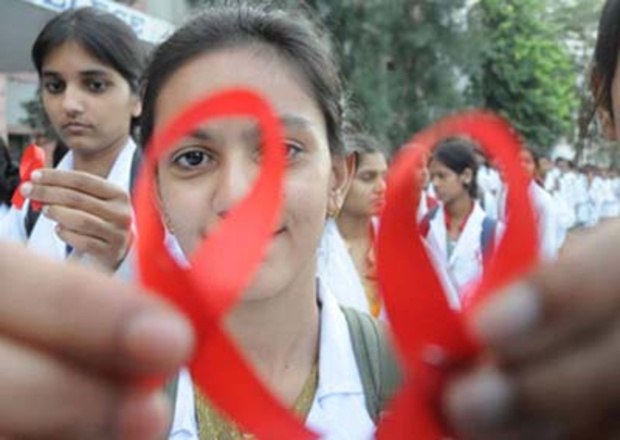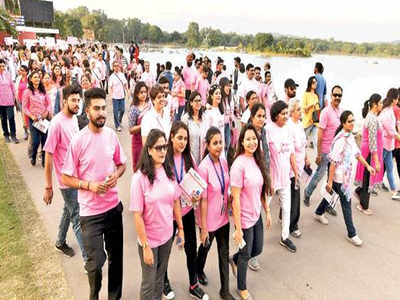Bengaluru|HL
About 2.1 million people, including about 2 million adults aged 15 and over, in India are currently living with HIV, according to UNAIDS. The number of women aged 15 and over living with HIV in the country stands at 790,000. The number of deaths due to AIDS in India was 68,000 in 2015.
“India, being a home and destination to all kinds of people from different countries, does not witness discrimination when it comes to treatment of people in the urban areas. It is the rural areas that face this problem since the people there are illiterate and stricken by poverty,” Dr Sheela Chakravarthy, Director, Internal Medicine, Fortis Hospital, Bannerghatta Road, Bangalore, told ETHealthWorld.
“The taboos and the myths associated with HIV prevent the people from getting the treatment they deserve. The element of gender bias definitely exists, but with an aggressive increase in the treatment of pregnant women, the risk of transmitting the disease to the offspring has reduced dramatically,” said Dr Chakravarthy.
.
“India has shown a 66% decline in new infections since 2000,” Dr P M Bhujang, President, Association of Hospitals, Mumbai, said quoting a UNAIDS report. “Discrimination and inequality towards HIV/AIDS patients has also reduced tremendously. The quality of treatment and care provided to HIV/AIDS patients has increased a lot over the last decade.”
“In a move to grant stronger protection to the country’s HIV community, the government plans to introduce the HIV and AIDS (Prevention and Control) Bill in Rajya Sabha during the ongoing winter session,” added Dr Bhujang.
According to Dr Chakravarthy, although people continue to be diagnosed as being HIV+, their immunity remains normal and unaffected and the overall occurrence of AIDS has reduced.
“This is because, being diagnosed as HIV+ need not necessarily result in AIDS. The early diagnosis of HIV can, in fact, reduce the possibility of progressing into AIDS. The availability of drugs at reasonable rates has made it possible to gain easier access to treatment,” she said.
Dr Chakravarthy further said, “What we have noticed is that of the present category of people who are being diagnosed, most belong to the upper classes of society. The diagnosis is being done at earlier stages and they show good CD4 counts which indicate that their immunity is still good and not yet affected. Also, with the advent of satellite medical centres, which assure the patient regarding the secrecy of the procedure, more and more people are now coming forward for treatment.”
Fortis Hospital, Bannerghatta Road, Bangalore plans to celebrate World AIDS Day, which is observed worldwide on December 1, by increasing the surveillance in its blood banks to reduce the risk of transmission through blood and blood products; increasing the counselling of high-risk individuals and elaborating the treatment options available which will give them a better quality of life and increasing awareness of HIV treatment in antenatal care and reducing the risk of perinatal transmissions.
“World AIDS Day is important for doctors because it can be treated and patients can be given a normal lifestyle. This is unlike a few years ago when there was no chance of being cured,” said Dr Chakravarthy.
According to Dr Chakravarthy, “One of the primary concerns when it comes to the prevention of HIV transmission is addressing the issue of hygiene. Hygienic conditions, when ideal, can go a long way towards preventing transmission especially through blood and blood products. Increasing awareness about the treatment available is also of the essence.”
Speaking about the major challenges faced in the prevention and treatment of AIDS in India, Dr Chakravarthy said, “India still faces quite a few challenges in its battle against AIDS. Most of these issues have to do with a lack of awareness regarding HIV, AIDS and the treatment options available. There are a lot of misconceptions that people harbour in their minds regarding these topics which makes the prevention and treatment of AIDS more challenging.”
According to Dr Chakravarthy, most frequently encountered hurdles in HIV/AIDS prevention and treatment in India are lack of education; presence of a lot of myths about the treatment procedure; failure to use condoms which can greatly reduce the risk of transmission; use of safe injection practices, i.e., the use of disposable syringes and needles, still being a distant dream for a lot of people residing in rural India; safe use of blood and blood products not uniformly practised; and transmission of HIV from mothers to infants as high risk mothers are referred to centres where there are hardly any people experienced in such cases.
She added, “There is a doubt regarding whether or not the grants and money authorised by the government is actually reaching the people who need it. Also, a strong policy of implementation and follow-up is needed and has to be checked to make sure that the funds have reached their targets and are being properly utilised.”
Inputs:ET










